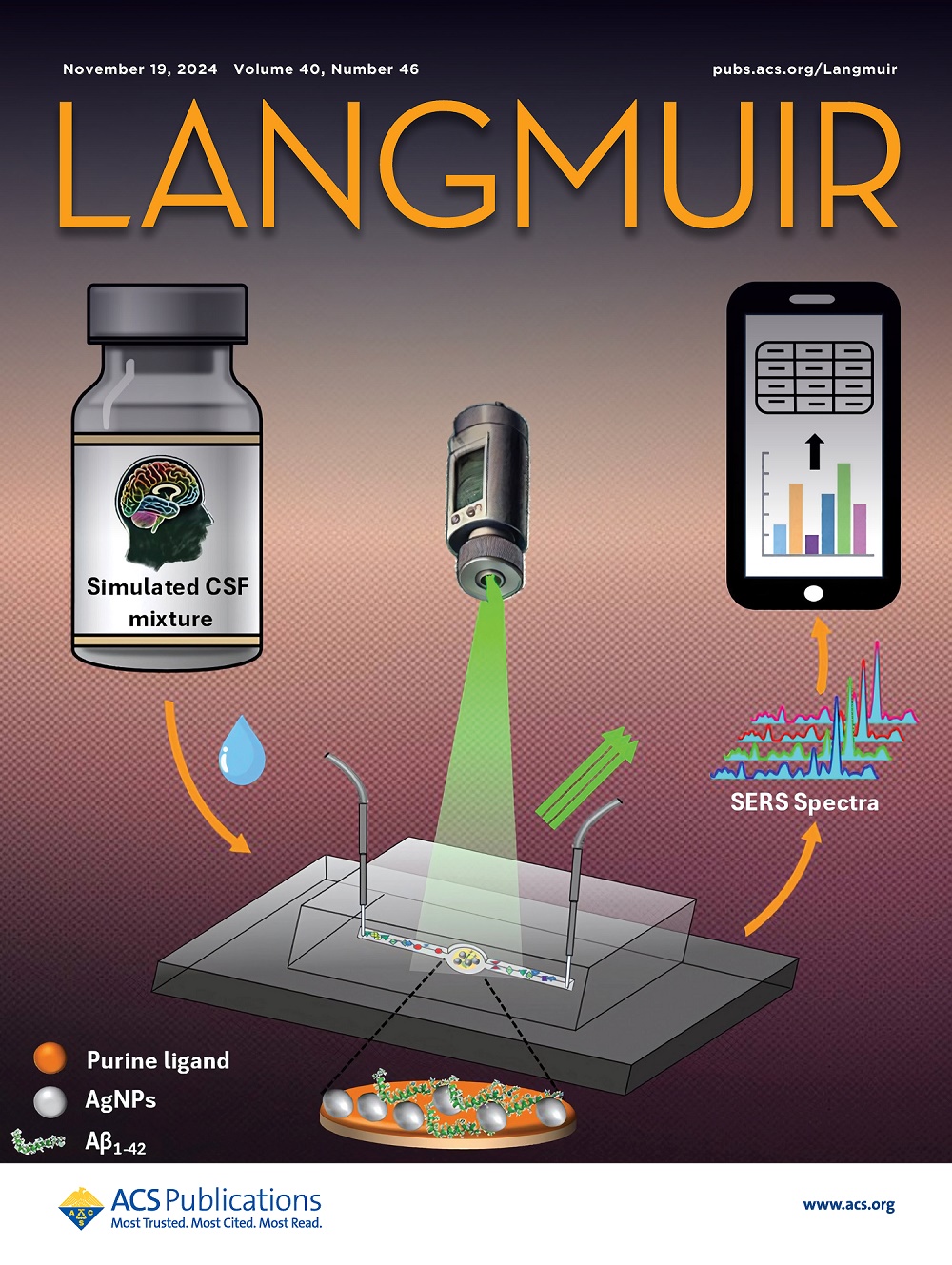在纳米颗粒软电晕研究的背景下,空气-水界面蛋白质变性
IF 3.7
2区 化学
Q2 CHEMISTRY, MULTIDISCIPLINARY
引用次数: 0
摘要
蛋白质与表面的相互作用可以包括蛋白质结合和展开,自20世纪60年代以来一直在研究。溶液中的蛋白质可以在固液和气液界面上吸附并变性,蛋白质在纳米颗粒(NP)表面的自发吸附形成电晕可以被描述为固液界面吸附的具体情况,其中表面曲率也变得重要。虽然纳米颗粒提供了很大的表面积,但它们并不是样品中蛋白质相互作用的唯一表面,因为在实验装置中会产生其他界面。在这项工作中,我们通过柠檬酸盐覆盖金纳米颗粒的软电晕研究来研究空气-水界面在蛋白质变性中的作用。软冠中的凝乳胰蛋白酶(ChT)蛋白在浓度和变性之间表现出反比关系,这是一种空气-水界面介导的趋势,如果没有正确的对照实验,可能会被误解为由蛋白质- np相互作用引起的。我们发现,观察到的任何蛋白质变性都来自空气-水界面和搅拌的协同效应,并且在没有这两个因素的情况下,NPs不会使“软电晕”中的ChT变性。虽然具有不同结构性质的蛋白质在疏水界面上的吸附和变性倾向是不同的,但在电晕研究中,使用简化的程序将纳米颗粒表面以外的界面面积最小化是很重要的,以防止所观察到的效应的错误归因。本文章由计算机程序翻译,如有差异,请以英文原文为准。

Protein Denaturation at the Air–Water Interface in the Context of Nanoparticle Soft Corona Studies
The interaction of proteins with surfaces can involve both protein binding and unfolding and has been investigated since the 1960s. Proteins in solution can adsorb onto and denature at both solid–liquid and gas–liquid interfaces, and the spontaneous adsorption of proteins on a nanoparticle (NP) surface to form a corona can be described as a specific case of adsorption at the solid–liquid interface, where the surface curvature also becomes important. While nanoparticles offer a large surface area, they are not the only surface in the sample with which the proteins interact due to the creation of other interfaces in an experimental setup. In this work, we examine the role of the air–water interface in protein denaturation via soft corona studies with citrate-capped gold nanoparticles. Chymotrypsin (ChT) protein in the soft corona was observed to exhibit an inverse relationship between concentration and denaturation, an air–water interface-mediated trend that, without the right control experiments, can be misinterpreted to be caused by protein–NP interactions. We show that any protein denaturation observed comes from the synergistic effect of the air–water interface and agitation and that NPs did not denature ChT in the “soft corona” in the absence of these two factors. While the propensity to adsorb and denature at hydrophobic interfaces varies among proteins with different structural properties, it is important to use simplified procedures that minimize interfacial areas other than the nanoparticle surface in corona studies to prevent misattribution of the observed effects.
求助全文
通过发布文献求助,成功后即可免费获取论文全文。
去求助
来源期刊

Langmuir
化学-材料科学:综合
CiteScore
6.50
自引率
10.30%
发文量
1464
审稿时长
2.1 months
期刊介绍:
Langmuir is an interdisciplinary journal publishing articles in the following subject categories:
Colloids: surfactants and self-assembly, dispersions, emulsions, foams
Interfaces: adsorption, reactions, films, forces
Biological Interfaces: biocolloids, biomolecular and biomimetic materials
Materials: nano- and mesostructured materials, polymers, gels, liquid crystals
Electrochemistry: interfacial charge transfer, charge transport, electrocatalysis, electrokinetic phenomena, bioelectrochemistry
Devices and Applications: sensors, fluidics, patterning, catalysis, photonic crystals
However, when high-impact, original work is submitted that does not fit within the above categories, decisions to accept or decline such papers will be based on one criteria: What Would Irving Do?
Langmuir ranks #2 in citations out of 136 journals in the category of Physical Chemistry with 113,157 total citations. The journal received an Impact Factor of 4.384*.
This journal is also indexed in the categories of Materials Science (ranked #1) and Multidisciplinary Chemistry (ranked #5).
 求助内容:
求助内容: 应助结果提醒方式:
应助结果提醒方式:


